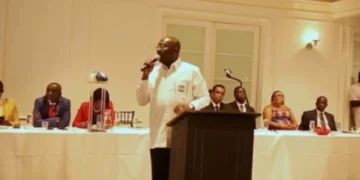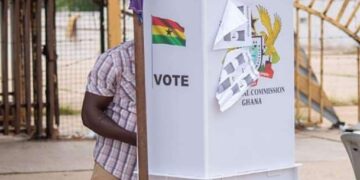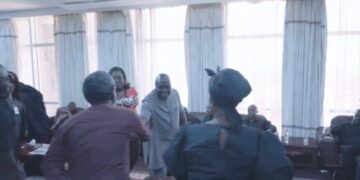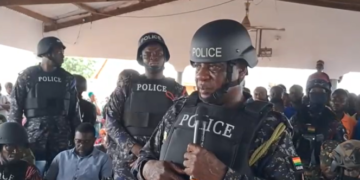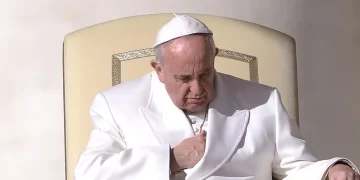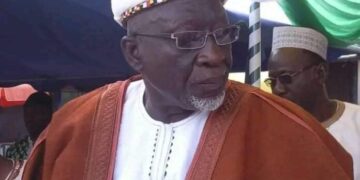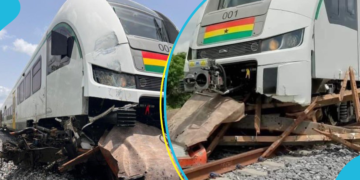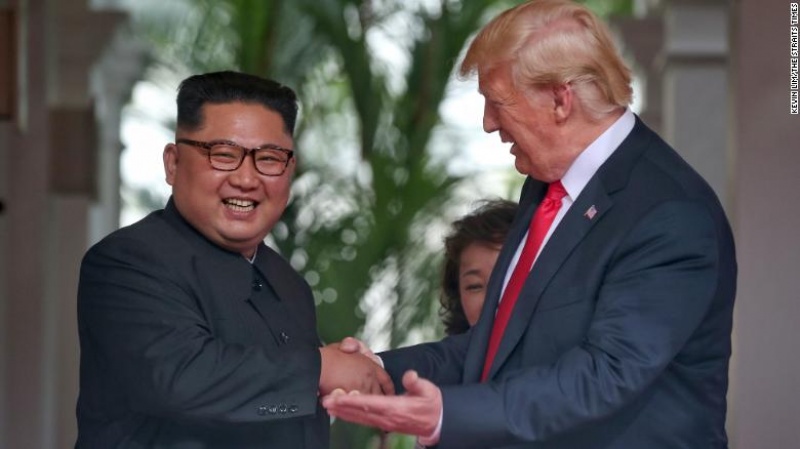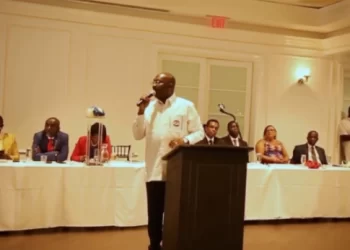
U.S. President Donald Trump and North Korean leader Kim Jong Un on Tuesday signed an agreement to work toward complete denuclearization and a lasting “peace regime” on the Korean Peninsula.
The document, which Trump deemed “very comprehensive,” says the two sides commit to hold follow-up negotiations and to cooperate to develop bilateral relations.
Details on the document are incoming, the president said at the conclusion of the leaders’ highly anticipated Tuesday summit, but Trump did say “we’re starting that process very quickly — very, very quickly” when asked about whether Kim had agreed to denuclearization.
A photo of the document Trump signed revealed that the leaders agreed on these four points:
1. The United States and the DPRK commit to establish new U.S.-DPRK relations in accordance with the desire of the peoples of the two countries for peace and prosperity.
2. The United States and the DPRK will join their efforts to build a lasting and stable peace regime on the Korean Peninsula.
3. Reaffirming the April 27, 2018 Panmunjom Declaration, the DPRK commits to work toward complete denuclearization of the Korean Peninsula.
4. The United States and the DPRK commit to recovering POW/MIA remains, including the immediate repatriation of those already identified.
“I think our whole relationship with North Korea and the Korean Peninsula is going to be a very much different situation than it has in the past. We both want to do something, we both are going to do something, and we have developed a very special bond,” Trump said at the signing ceremony. “This is going to lead to more and more and more.”
After the signing of the document, Trump declared to the assembled media at the summit that Kim was a “very worthy, very smart negotiator.”
“We had a terrific day and we learned a lot about each other and about our countries,” Trump said, standing shoulder-to-shoulder with the North Korean dictator. “I learned he’s a very talented man. I also learned he loves his country very much.”
The summit began with the two men briefly shaking hands and taking a photo side-by-side, then moving to another room, where they sat and made brief statements for the press.
“We’re going to have a great discussion and, I think, tremendous success. It will be tremendously successful. And it’s my honor,” Trump said.
“We will have a terrific relationship — I have no doubt,” the president added.
For his part, the North Korean leader said, “It was not easy to get here. The past worked as fetters on our limbs, and the old prejudices and practices worked as obstacles on our way forward. But we overcame all of them, and we are here today,” according to a translation provided by the White House.
Trump responded: “That’s true.”
Following those comments, the two leaders began what was said to be a one-on-one meeting, with only translators in attendance.
They then made a brief appearance together at a balcony exposed to cameras, and then headed into a larger bilateral meeting. With delegation members on opposing sides of the table, Trump delivered another message to Kim.
“Mr. Chairman, it’s a great honor to be with you, and I know we’ll have tremendous success together and we’ll solve a big problem — a big dilemma — that until this point has been unable to be solved, and working together we’ll get it taken care of,” Trump said before reaching for another handshake with his North Korean counterpart.
President Donald Trump (R) gestures as he meets with North Korea’s leader Kim Jong Un (L) at the start of their historic US-North Korea summit, at the Capella Hotel on Sentosa island in Singapore on June 12, 2018.
After hearing Kim’s response, Trump added: “We will solve it, we will be successful, and I look forward to working on it with you. It will be done.”
Later in the day, the two men walked out of the meeting together, and Trump addressed the media.
“It’s going great. We had a really fantastic meeting, a lot of progress, really very positive. I think better than anybody could have expected — top of the line, really good,” the president said.
First such meeting in history
It was the first time that sitting leaders of the countries have met, and it came after years of bluster and threats from Pyongyang — and from Trump — that have raised fears of war.
Of note, many analysts have argued that any recent U.S. leader who had wanted to meet with Kim or his father before him could have done so, because North Korea sought the legitimization of such an event.
Trump gave Kim’s regime that opportunity, but the U.S. team also said it is resolute in its goal for Tuesday’s summit: North Korea’s total and verifiable denuclearization.
American officials have dangled relief from stringent international sanctions or even economic aid if the hermit regime were to acquiesce. Beyond those benefits, North Korea was understood to want guarantees about the future of its autocratic regime and the security of its borders.
Washington has hoped the bilateral discussions would be the first of many with Kim’s government, eventually leading to the country surrendering its nuclear capabilities. That weapons program has become a threat to neighbors South Korea and Japan — and more recently, even for the U.S. mainland.
For decades, Pyongyang has sought to depict the United States as an imperialist aggressor for its role in the Korean War, while simultaneously blaming Washington for North Korea’s dire economic condition.
The isolated country has long said it’s justified in seeking nuclear weapons in light of an “extreme and direct nuclear threat” from the United States.
Tuesday’s meeting is seen as a diplomatic breakthrough, even if some experts have said the summit is a strategic mistake on Washington’s part, since it allows Kim to appear as an equal to Trump.
What was expected?
Experts had predicted little in terms of concrete results from the summit. In the past, Pyongyang has said it may denuclearize only if certain conditions were fulfilled. Those include terminating America’s military presence in South Korea as well as ending the U.S. regional nuclear umbrella, a security arrangement in which Washington promises in-kind retaliation on behalf of close allies if they are attacked with nuclear weapons.
Washington has said its troops in South Korea would not be up for discussion during the Tuesday summit. Such a withdrawal could have major implications for Asia.
While a failure to reach any deal would have posed risks, so does reaching an agreement.
“The greatest risk is if we get a political agreement at this summit, and the optics look nice, but then it falls apart on the details — maybe not in six months, maybe not in one year, but in five years,” Michael Kovrig, senior advisor at the International Crisis Group, told CNBC on Monday.
“That’s why we need a clear, step-by-step process that goes action-for-action [and] creates a security environment where the North Koreans are actually willing to take steps, and the United States is in a position to monitor and verify those steps.”
Source: CNBC



